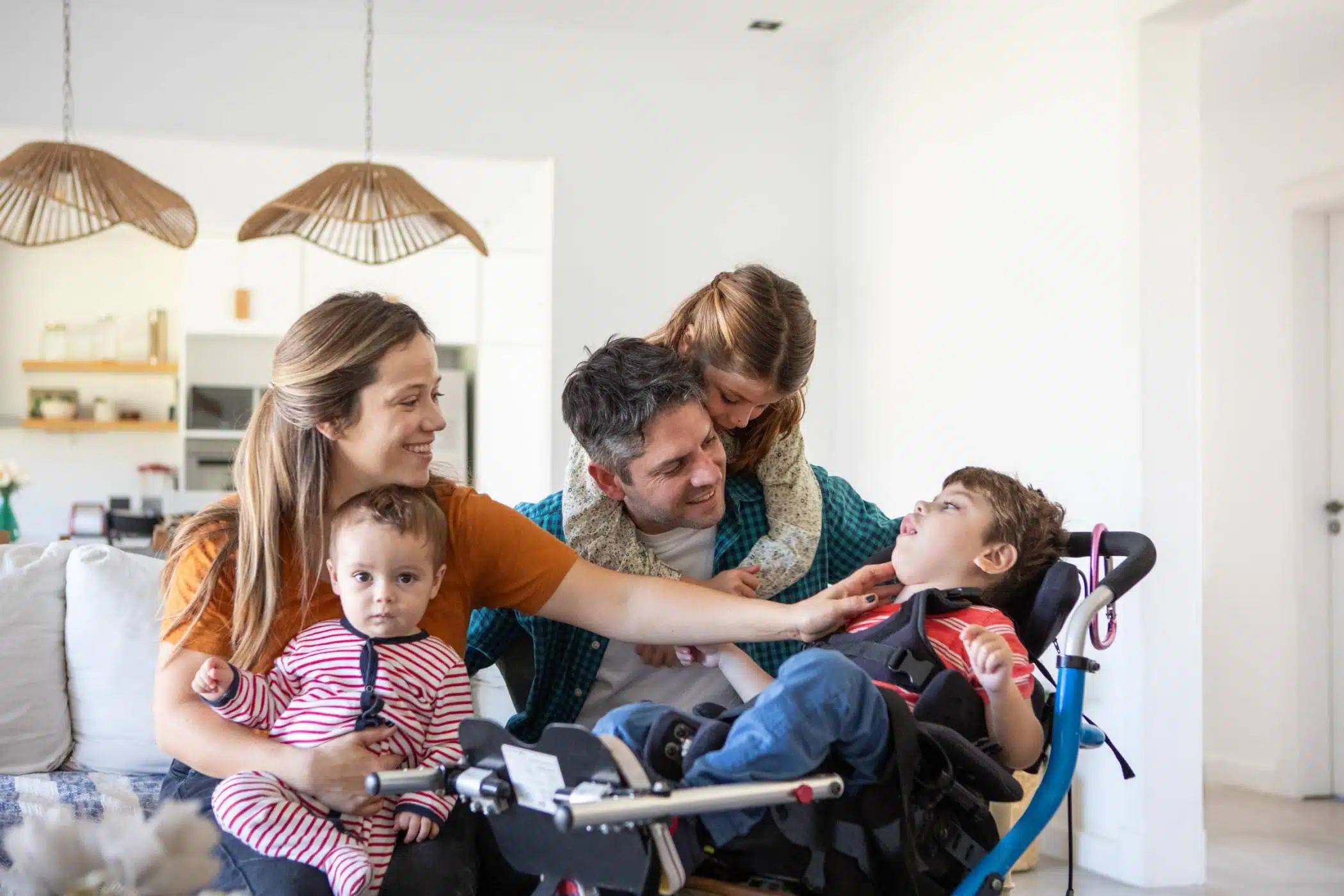Early Intervention For Cerebral Palsy: Why It Matters
Kids
 Posted by: Rebecca Bazzoni 5 months ago
Posted by: Rebecca Bazzoni 5 months ago
Cerebral palsy (CP) is a neurological disorder that impacts muscle control, movement, and posture. It results from damage or abnormalities in the developing brain, particularly in areas responsible for coordination and movement.
The term “cerebral” pertains to the brain, while “palsy” refers to impaired muscle control or paralysis.

Common Causes of Cerebral Palsy
While the exact cause of cerebral palsy is often unknown, several factors can contribute to its development, including:
- Brain damage before, during, or shortly after birth.
- Infections or medical conditions affecting the developing brain during pregnancy.
- Premature birth or low birth weight.
- Genetic factors and certain genetic disorders.
Types and Symptoms
Cerebral palsy is classified into different types based on specific movement and muscle control difficulties. The most common types include:
Spastic Cerebral Palsy
Characterized by increased muscle tone or tightness, leading to stiff and jerky movements. This is the most prevalent type of CP.
Dyskinetic (Athetoid) Cerebral Palsy
Children with this type experience involuntary and uncontrolled movements, often affecting the face, limbs, or torso. Movements may be slow, writhing, or unpredictable.
Ataxic Cerebral Palsy
This type affects coordination, leading to difficulties with balance, depth perception, and precise movements. Children may struggle with tasks such as reaching for objects or walking steadily.
Symptoms Can Vary Widely But Often Include:
- Muscle stiffness or spasticity
- Impaired coordination and balance
- Abnormal movement patterns
- Challenges with fine motor skills (e.g., writing, buttoning clothes)
- Delays in reaching developmental milestones (e.g., crawling or walking)
- Speech and communication difficulties
- Vision or hearing problems
- Seizures (in some cases)
Treatment and Management
Although there is no cure for cerebral palsy, early intervention is crucial in managing the condition and improving independence and quality of life.
The goal of treatment is to maximize functional abilities, minimize limitations, and promote independence. Common treatment options include:
Physical Therapy: Focuses on improving mobility, strength, and motor skills through targeted exercises and stretches.
Occupational Therapy: Aims to enhance functional skills related to daily activities, fine motor control, and adaptive techniques.
Speech and Language Therapy: Addresses difficulties with speech, communication, swallowing, and oral motor skills.
Medications: Prescribed to manage symptoms such as muscle spasms, seizures, or pain.
Assistive Devices: Orthotics, braces, walkers, wheelchairs, or other adaptive equipment may be recommended to enhance mobility and independence.
Support Services: Access to psychosocial support, educational resources, and community support groups can provide invaluable assistance and a network of support for children and their families.
Conclusion
Early intervention for cerebral palsy is vital in helping children reach their full potential. A comprehensive evaluation and a personalized treatment plan developed with a team of experienced healthcare professionals can significantly impact the quality of life for those with CP.

With the right support and interventions, children with cerebral palsy can lead fulfilling lives, actively participating in their communities and achieving their goals.
Categories:
You May Be Interested In:

Why Pre-Writing Skills Matter and How to Foster Them in Young Children
9 months ago by Rebecca Bazzoni

Sensory Scavenger Hunt: Winter Weather Edition
1 year ago by Rebecca Bazzoni

Speech Outdoors: Scavenger Hunt
5 years ago by Rebecca Bazzoni

Encouraging Speech Development
7 years ago by Rebecca Bazzoni

